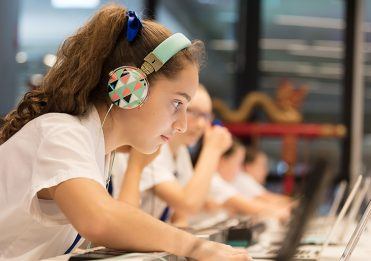
How to: Set-up Parental Controls
Bring Your Own Device | Friday 10 April 2020
Read More ▻
Brisbane Girls Grammar School’s Bring Your Own Device (BYOD) Program allows students to select and use their own computing device in all classes.
Students can configure their device to meet their personal likes and individual learning style, rather than working with a device that has been prescribed for them. The program forms part of the School’s overall strategy to personalise the curriculum and learning for students. Students can move their learning seamlessly between home, school and alternative wireless environments, such as local libraries.
All Year 7 students are required to own a device that supports a stylus or has the facility to use a stylus/touch screen input. ‘Digital inking’, the use of a stylus or pen, allows numbers, symbols, diagrams, drawings and other markings to be captured digitally.
Recent studies support using a stylus device in the educational context. Dean (2014) explains the ability to mix digital ink, images and text means that products such as formulas in Mathematics or the drawing of diagrams or annotation of images imported into text in Biology, can be quickly undertaken.
The School’s current BYOD Requirements and Frequently Asked Questions outline the minimum specifications required for BYOD devices. The School requires all Year 7 students to own a device that supports a stylus or has the facility to use a stylus/touch screen input.